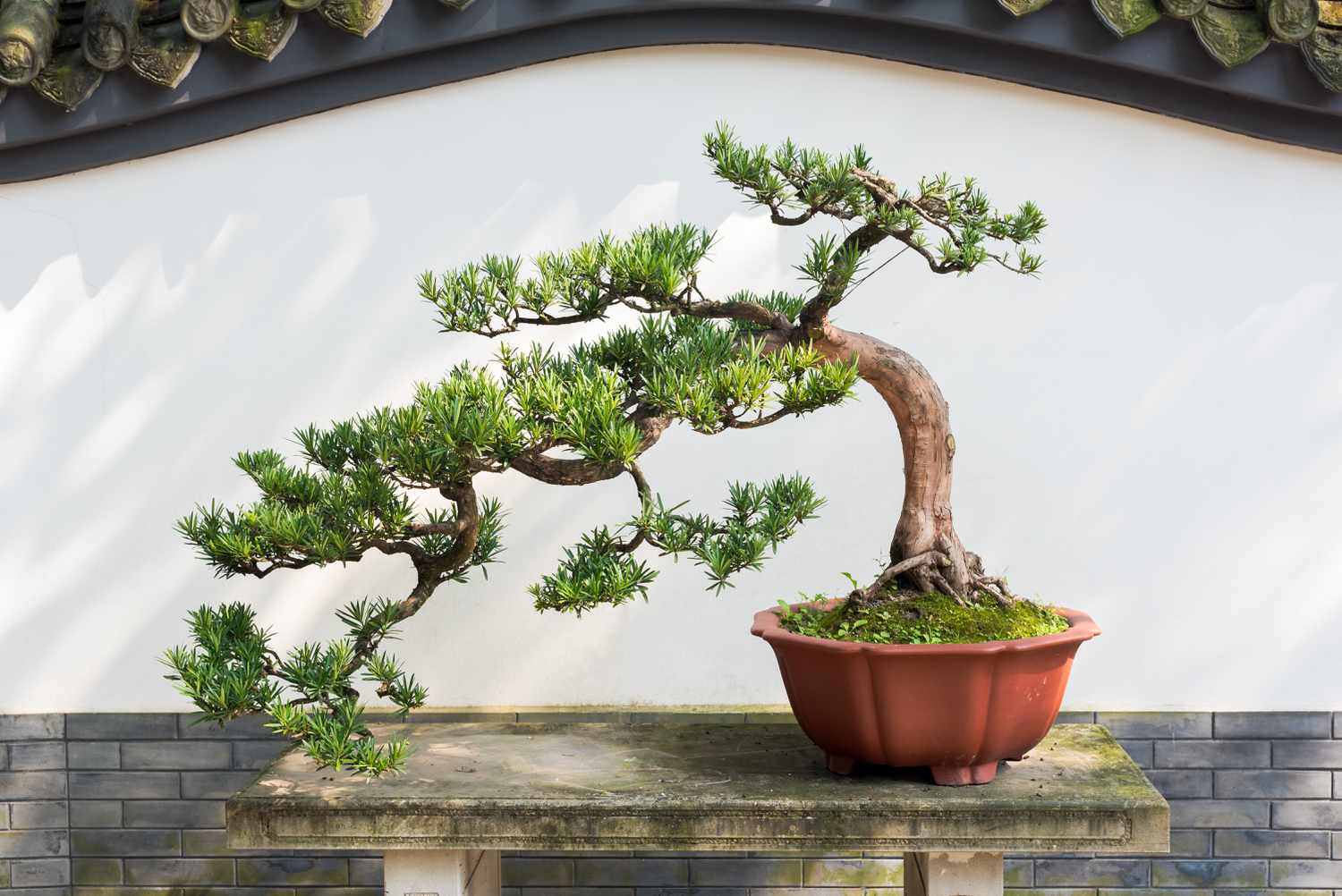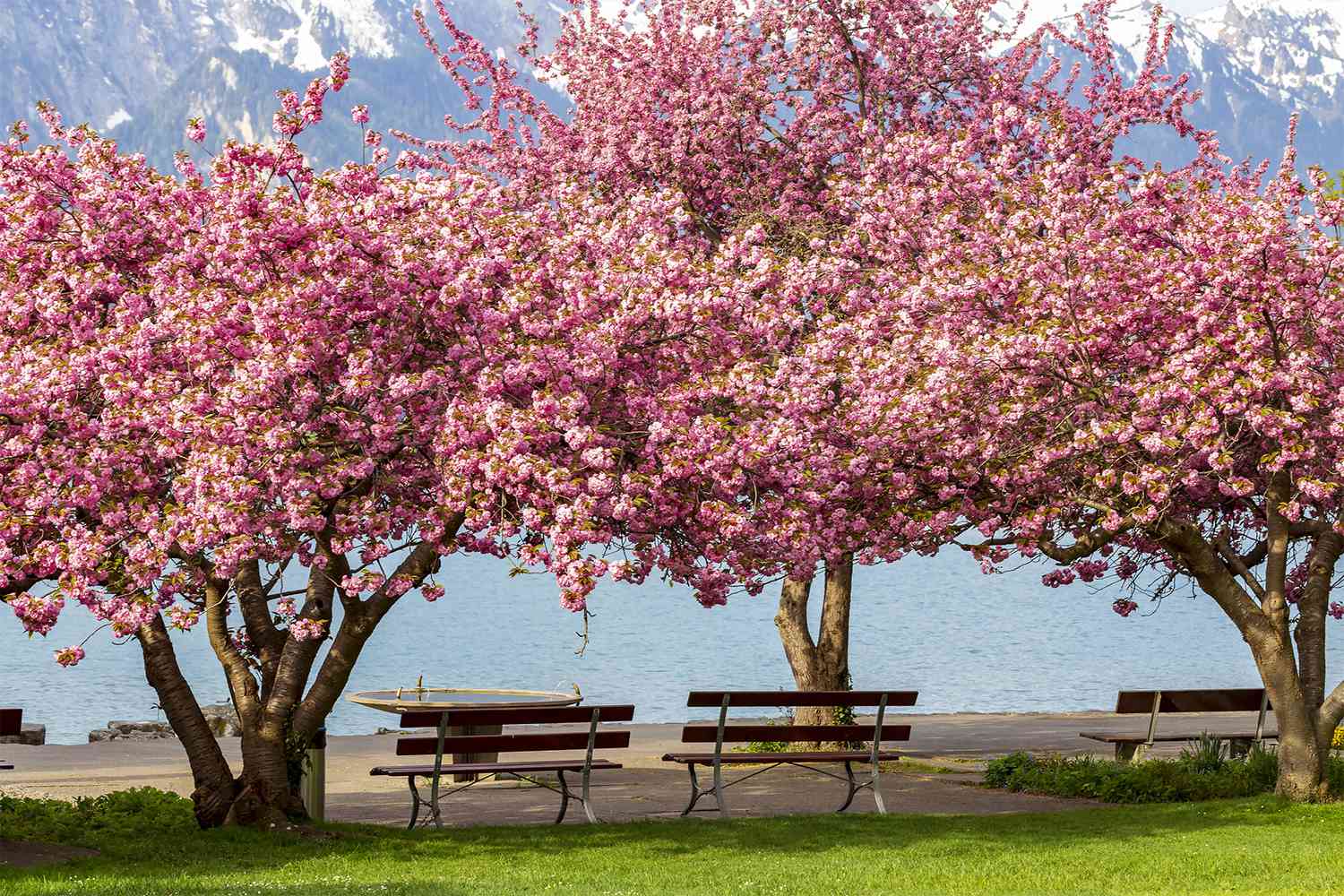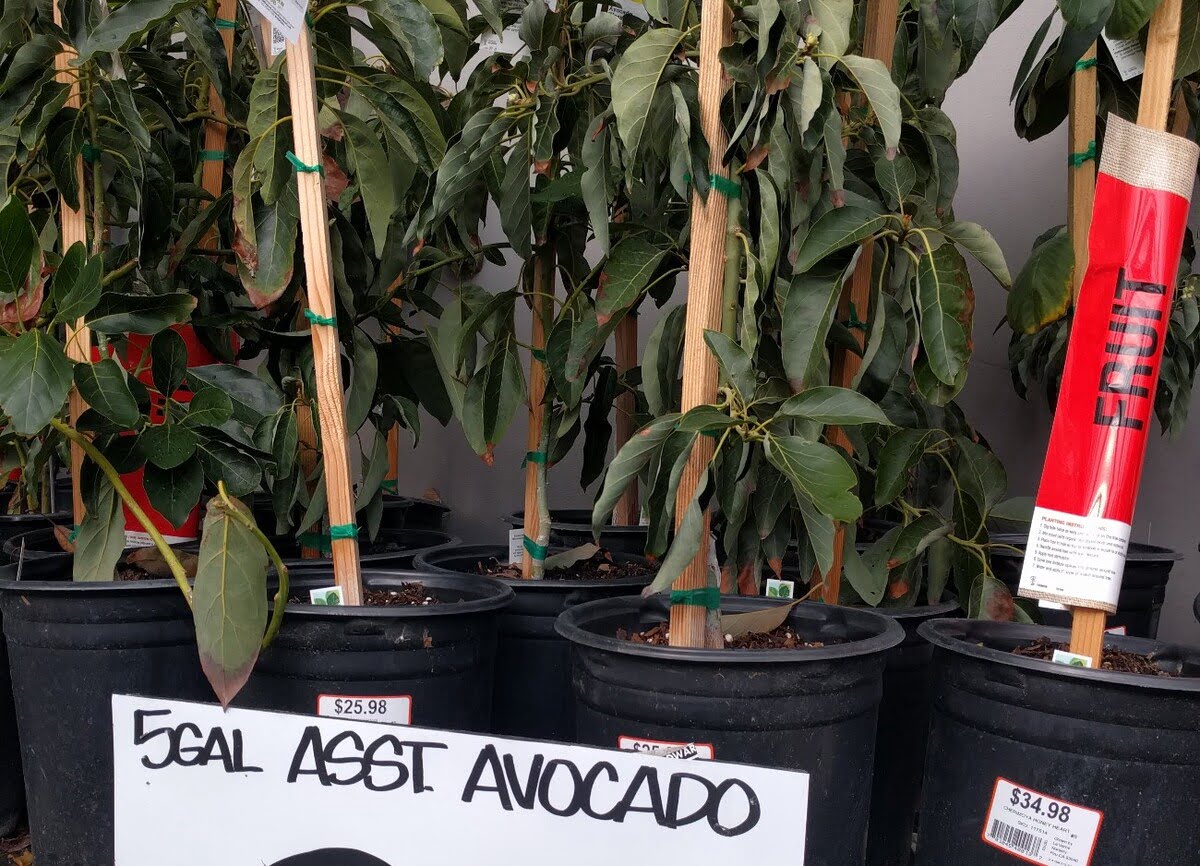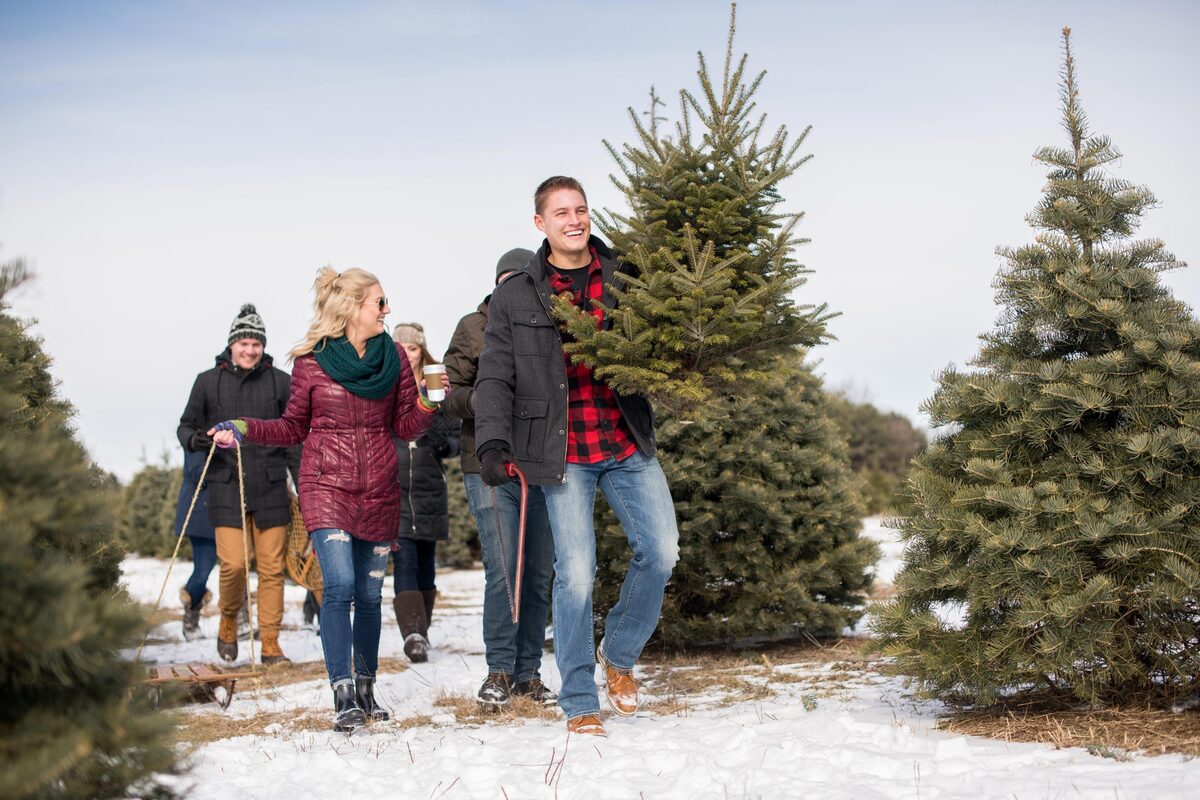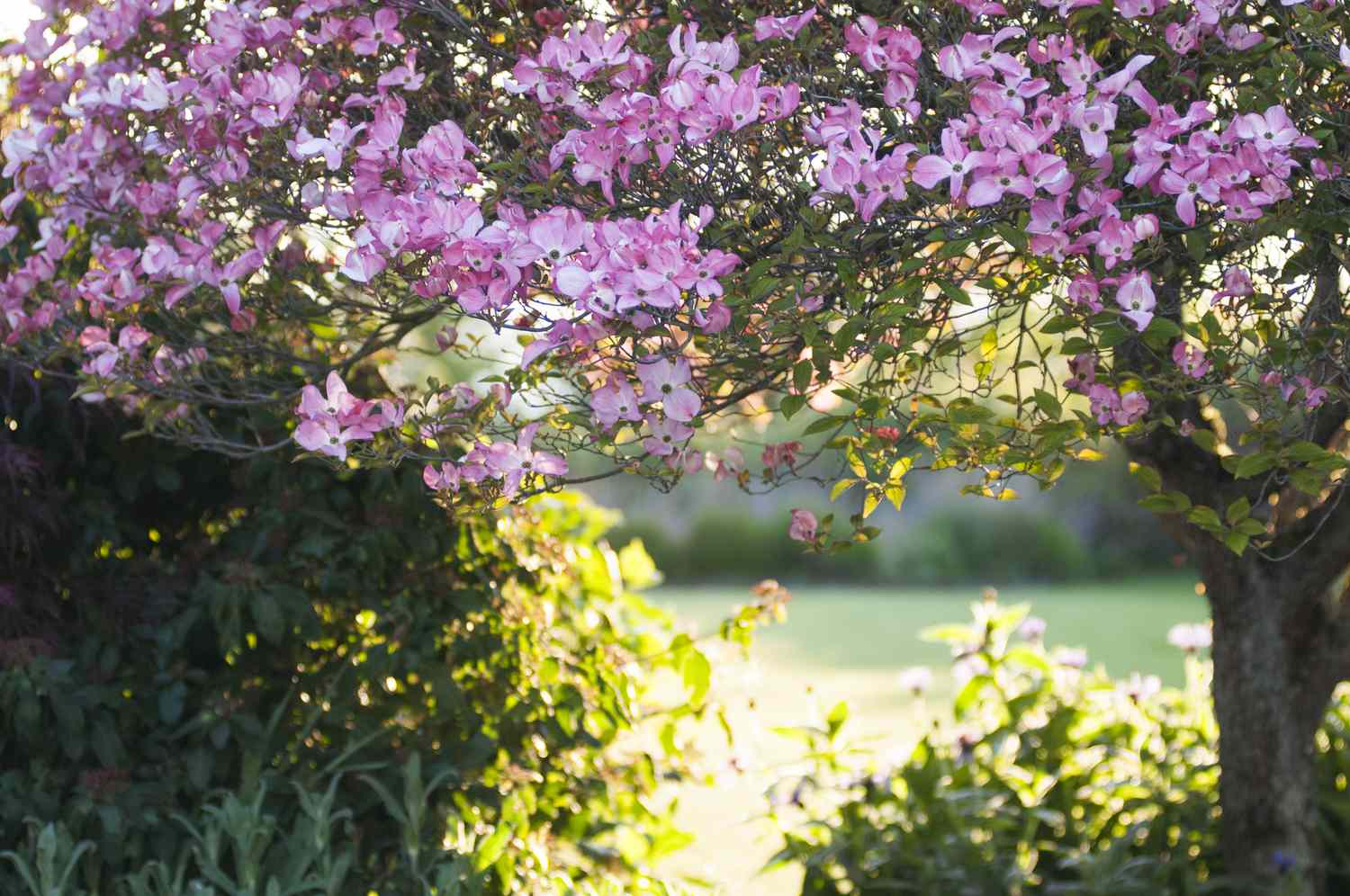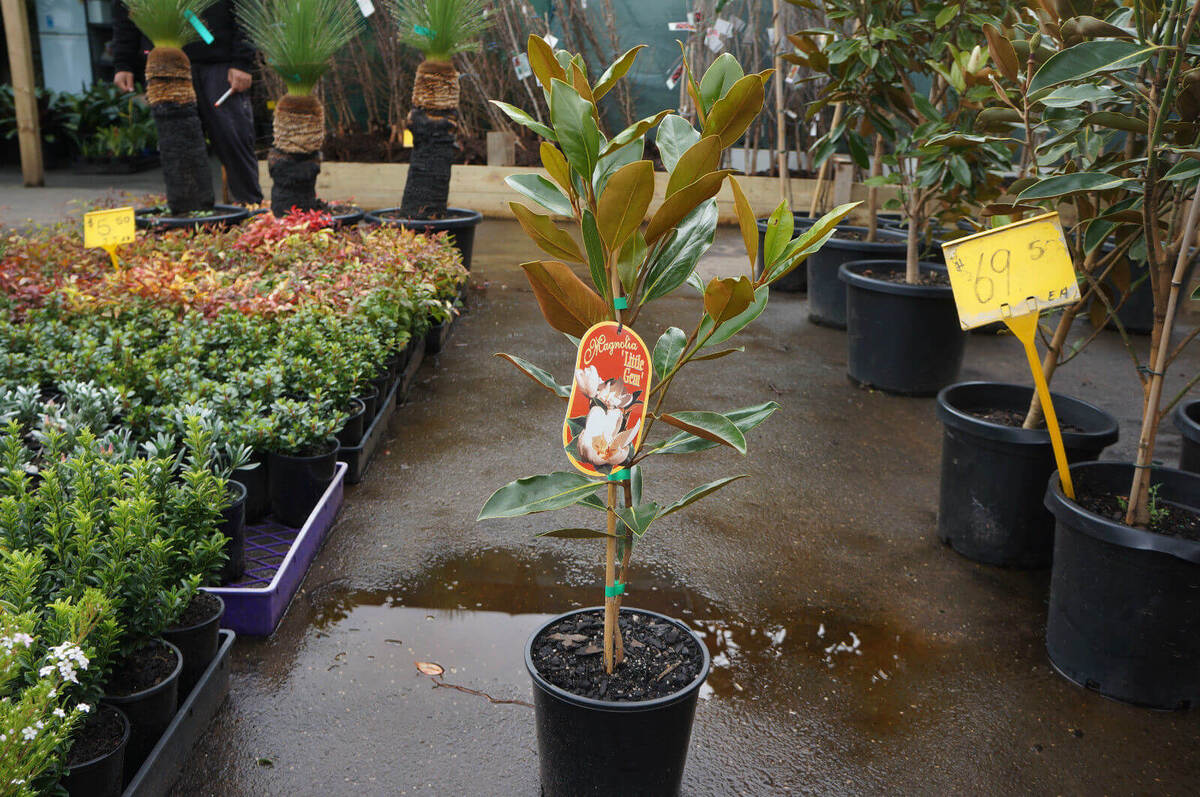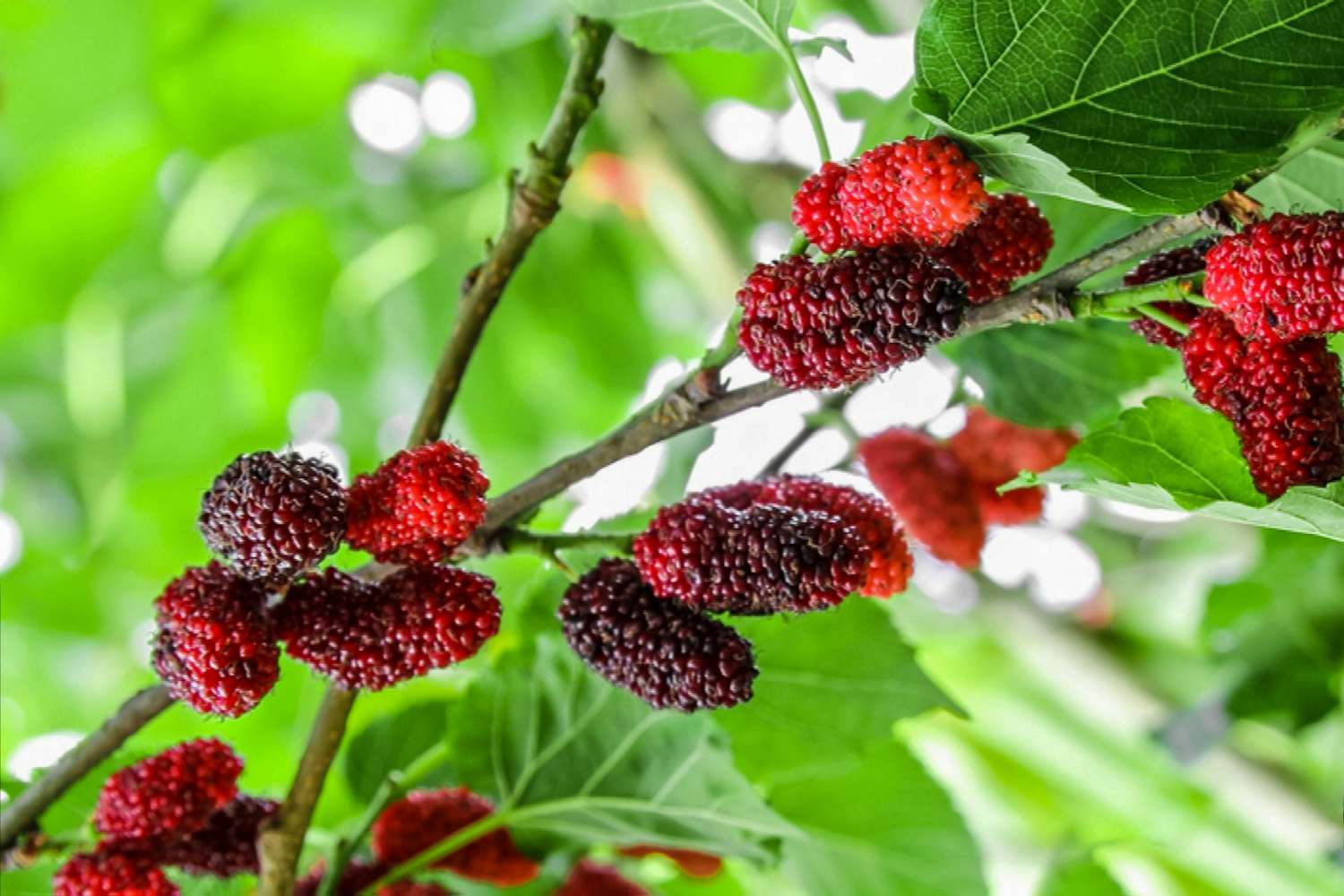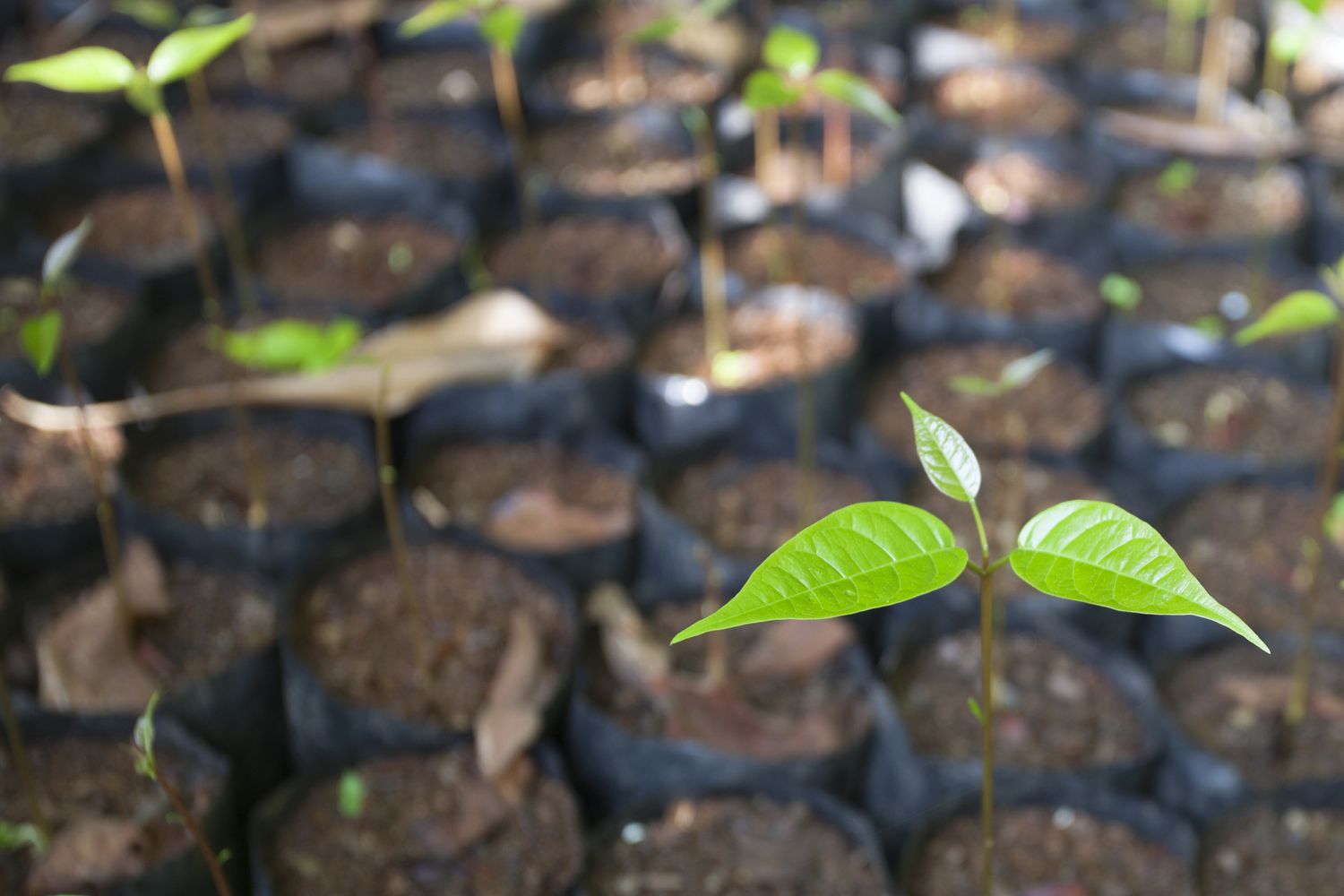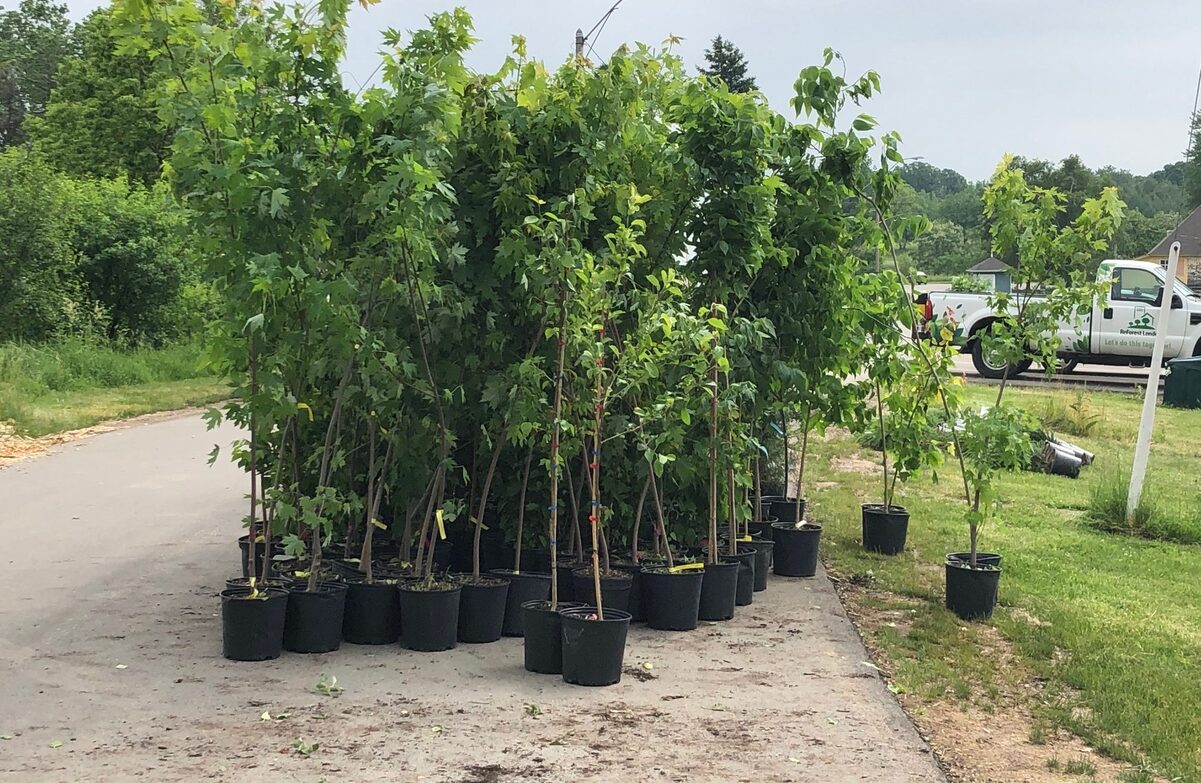Home>Types of Gardening>Ornamental Gardening>Where Are Trees And Shrubs Grown
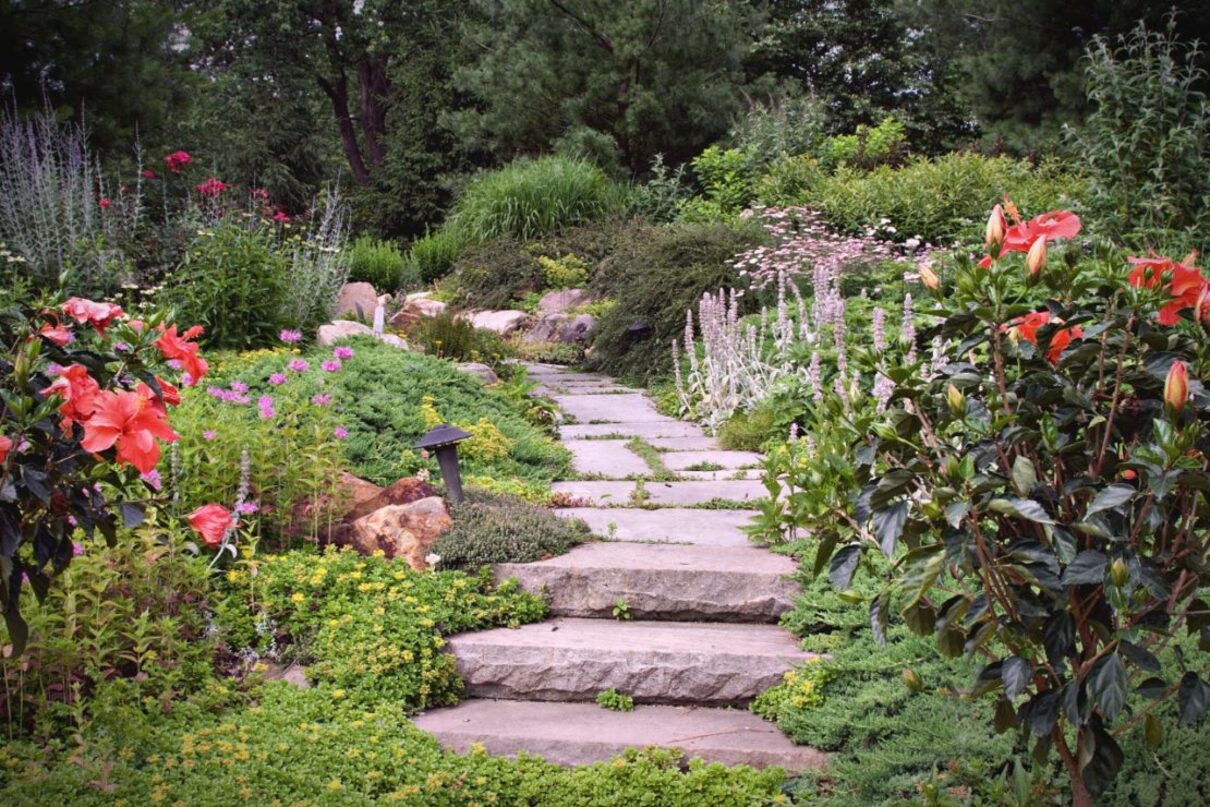

Ornamental Gardening
Where Are Trees And Shrubs Grown
Modified: January 22, 2024
Enhance your garden with beautiful trees and shrubs through the art of ornamental gardening. Discover where these stunning plants thrive and add natural beauty to your outdoor space.
(Many of the links in this article redirect to a specific reviewed product. Your purchase of these products through affiliate links helps to generate commission for Chicagolandgardening.com, at no extra cost. Learn more)
Table of Contents
Introduction
Ornamental gardening is a popular and fulfilling hobby for many enthusiasts around the world. It involves the cultivation and arrangement of trees, shrubs, flowers, and other plants for aesthetic purposes. These carefully designed and meticulously maintained outdoor spaces add beauty, charm, and tranquility to various settings – from residential areas and urban parks to botanical gardens and commercial sites.
Ornamental gardening serves both practical and aesthetic purposes. Apart from enhancing the visual appeal of an area, it also promotes environmental benefits such as improving air quality, providing habitats for wildlife, and reducing soil erosion. This form of gardening allows individuals to express their creativity while creating harmonious and inviting spaces for relaxation, social gatherings, and recreation.
In this article, we will explore the different settings where trees and shrubs are commonly grown for ornamental purposes. From private gardens to public parks and educational institutions to industrial sites, each location presents unique opportunities for landscaping and garden design.
Whether you are a seasoned gardener looking for inspiration or a beginner eager to embark on this rewarding journey, read on to discover where trees and shrubs are grown for ornamental purposes, and how they contribute to the beauty and functionality of these diverse settings.
Residential Areas
Residential areas provide the perfect canvas for ornamental gardening. Whether it’s a small backyard or a sprawling estate, homeowners and landscape enthusiasts often invest time and effort in creating beautiful outdoor spaces. Trees and shrubs are grown in residential areas for several reasons.
Firstly, they add curb appeal and increase property value. A well-designed landscape with carefully chosen trees and shrubs can significantly enhance the overall aesthetics of a home. The right combination of plants can create a welcoming entrance, frame the house, and provide focal points throughout the yard.
In addition to their visual appeal, trees and shrubs in residential areas also offer functional benefits. They can provide shade, which helps to cool down the outdoor space during hot summer months. This can reduce energy costs and create a more comfortable environment for outdoor activities.
Furthermore, trees and shrubs act as a natural privacy screen, creating a sense of seclusion and tranquility in residential properties. They can also act as noise barriers, blocking out unwanted sounds from nearby roads or neighbors.
Homeowners often use trees and shrubs to create distinct outdoor living areas within their property. These green spaces can be transformed into cozy patios, serene garden nooks, or even vibrant play areas for children.
Moreover, residential areas provide the opportunity for residents to grow fruit trees and edible shrubs in their gardens. This not only adds to the visual appeal but also allows residents to enjoy the bounty of fresh fruits and herbs harvested from their own backyard.
Whether it’s a colorful flower bed, a lush green lawn, or a carefully pruned tree, the cultivation of trees and shrubs in residential areas brings beauty, functionality, and a personal touch to these private spaces. It allows homeowners to connect with nature and create their own slice of heaven.
Urban Parks and Gardens
Urban parks and gardens are essential green spaces in the midst of bustling cities. They provide a natural retreat, offering residents and visitors alike a respite from the concrete jungle. Trees and shrubs play a vital role in these urban settings, enhancing their beauty and contributing to the overall well-being of the community.
One of the primary functions of trees and shrubs in urban parks is to provide shade. With their expansive canopies and dense foliage, they create cool and comfortable areas for people to relax, have picnics, or engage in recreational activities. This shade not only benefits the park-goers, but it also helps to regulate the temperature and reduce the heat island effect in urban areas.
Beyond their practical benefits, trees and shrubs in urban parks and gardens add aesthetic value. The diversity of species and the careful arrangement of plants create visually stunning displays throughout the park. They also attract birds, butterflies, and other wildlife, adding a touch of biodiversity to the urban landscape. This connection with nature has a positive impact on mental health and well-being.
In addition to their beauty, trees and shrubs in urban parks improve air quality by absorbing pollutants such as carbon dioxide and releasing oxygen. They also help to mitigate noise pollution by acting as natural barriers, muffling the sounds of the city and creating a more peaceful environment.
Furthermore, urban parks and gardens often serve as educational spaces where visitors can learn about different plant species, their ecological importance, and proper gardening techniques. They provide opportunities for workshops, guided tours, and interactive experiences that promote environmental awareness and conservation.
Overall, trees and shrubs in urban parks and gardens contribute to the overall livability and sustainability of urban areas. They provide a green sanctuary where people can connect with nature, relax, exercise, and appreciate the beauty of the natural world amidst the cityscape.
Botanical Gardens
Botanical gardens are enchanting spaces dedicated to the cultivation, preservation, and display of a wide variety of plants. These living museums play a crucial role in education, research, and conservation efforts. Trees and shrubs are grown in botanical gardens for their educational value, as well as for their aesthetic appeal.
First and foremost, botanical gardens serve as repositories of plant diversity. They house collections of rare and exotic trees and shrubs from around the world, providing visitors with a unique opportunity to explore different species and ecosystems in one location. These gardens often have specialized sections, such as tropical rainforests, desert landscapes, or native plant displays, to showcase the incredible diversity and beauty of the plant kingdom.
Aside from their beauty, botanical gardens play a crucial role in plant conservation. They act as seed banks, cultivating endangered species and preserving plant genetic material for future generations. Through collaboration with scientific institutions, botanical gardens contribute to research efforts focused on plant biology, ecology, and taxonomy.
When it comes to public education and outreach, botanical gardens are invaluable resources. They provide a platform for visitors of all ages to learn about plants, their ecological importance, and their cultural significance. Through guided tours, workshops, and interactive exhibits, botanical gardens help to raise awareness about the value of biodiversity and the need for environmental stewardship.
In addition to their educational role, botanical gardens offer breathtaking landscapes that inspire and delight visitors. Careful planning and design ensure that trees and shrubs are arranged in harmonious compositions, creating visually stunning displays throughout the gardens. Trees with vibrant foliage, ornamental bark, or stunning blooms provide focal points, while shrubs are often used to add structure and create inviting garden rooms.
Overall, botanical gardens are not only showcases of natural beauty but also important centers for education, conservation, and research. The cultivation of trees and shrubs in these gardens promotes a deeper understanding and appreciation of the plant world, while offering visitors a glimpse into the incredible diversity and wonder of nature.
Nurseries and Plantations
Nurseries and plantations are dedicated spaces where trees and shrubs are grown on a large scale for various purposes. They play a critical role in supplying plants for landscaping, gardening, reforestation, and commercial purposes.
Nurseries are establishments that specialize in the propagation and cultivation of trees and shrubs. They provide a wide range of plant species, varieties, and sizes to cater to the needs of landscapers, homeowners, and gardeners. In nurseries, trees and shrubs are carefully nurtured from seeds, cuttings, or grafts until they reach a suitable size for transplantation. Nurseries offer a convenient and reliable source of healthy and well-established plants, making it easier for individuals to create beautiful and thriving gardens.
Plantations, on the other hand, are large-scale agricultural operations where trees are grown for commercial purposes. These plantations may focus on specific tree species that are used for timber production, paper manufacturing, or other industries. The cultivation and management of trees in plantations often involve specialized techniques such as selective breeding, pruning, and intensive care to ensure optimal growth and yield.
In addition to their commercial functions, nurseries and plantations also contribute to environmental conservation efforts. Nurseries often prioritize the propagation of native or endangered tree species, which helps to preserve genetic diversity and protect ecosystems. Plantations, when managed sustainably, can serve as carbon sinks, mitigating climate change by absorbing carbon dioxide from the atmosphere.
Furthermore, both nurseries and plantations provide employment opportunities and contribute to the local economy. They create jobs in plant propagation, cultivation, and maintenance, as well as in the supply chain related to the distribution and sale of trees and shrubs. In some cases, these establishments also offer educational and training programs for individuals interested in pursuing a career in horticulture or forestry.
Overall, nurseries and plantations are key players in the cultivation and distribution of trees and shrubs, serving both commercial and environmental purposes. They provide a valuable resource for individuals and industries seeking to enhance their landscapes, support sustainable forestry practices, and contribute to the well-being of communities.
Forests and Woodlands
Forests and woodlands are natural habitats where trees and shrubs grow in abundance, covering vast stretches of land. These ecosystems play a crucial role in maintaining biodiversity, regulating climate, and providing various ecosystem services. Trees and shrubs are integral components of forests and woodlands, contributing to their ecological balance and providing habitat for a wide range of plants and animals.
Forests are characterized by the presence of large, mature trees that form a dense canopy, creating a shaded and sheltered environment below. Shrubs, on the other hand, are smaller woody plants that grow closer to the ground, often forming understory vegetation. Together, these trees and shrubs create a complex and diverse ecosystem.
Forests and woodlands are essential for maintaining soil health and preventing erosion. The roots of trees and shrubs help to anchor the soil, reducing the risk of landslides and preserving water quality by filtering runoff. Trees also have a remarkable ability to absorb and store carbon dioxide, helping to mitigate climate change and reduce greenhouse gas emissions.
Moreover, forests and woodlands serve as vital habitats for a wide range of wildlife. The presence of diverse tree and shrub species provides food, shelter, and nesting sites for birds, mammals, insects, and other creatures. The intricate network of tree branches and shrub thickets creates a complex habitat that supports a rich and interconnected web of life.
Forests and woodlands are not only important for ecological reasons but also provide recreational opportunities for people. They offer scenic trails for hiking, camping, and nature exploration. Forests also provide a sense of solace and tranquility, allowing individuals to connect with nature and experience its restorative effects.
Conservation and responsible management of forests and woodlands are crucial to ensure their long-term health and sustainability. Efforts must be made to protect these valuable ecosystems by promoting sustainable logging practices, preventing illegal deforestation, and supporting reforestation initiatives.
In summary, forests and woodlands are dynamic ecosystems where trees and shrubs thrive, providing numerous environmental benefits and serving as important habitats for wildlife. They are not only vital for maintaining biodiversity and regulating climate but also offer recreational and aesthetic value for people to enjoy and appreciate the beauty of the natural world.
Highway and Roadside Landscaping
Highways and roads often traverse through vast stretches of land, offering unique opportunities for landscape design and beautification. Highway and roadside landscaping involves the intentional cultivation of trees, shrubs, and other vegetation along the sides of roads to enhance their visual appeal, improve safety, and contribute to the overall environmental quality.
Trees and shrubs play a significant role in highway and roadside landscaping for several reasons. One of their key functions is to provide aesthetic appeal. By planting a variety of tree species with vibrant foliage, colorful flowers, or interesting bark textures, scenic vistas are created for motorists to enjoy during their travels. This not only enhances the visual experience but also creates a sense of calm and relaxation.
In addition to their aesthetic value, trees and shrubs in highway and roadside landscaping also serve as functional components. They act as natural barriers, helping to reduce noise pollution by absorbing sound and shielding neighboring communities from the noise generated by passing vehicles. This makes the surrounding areas more peaceful and enjoyable for residents and wildlife.
Trees and shrubs also help to mitigate air pollution along highways and roads. They absorb carbon dioxide and release oxygen, improving air quality and reducing the impact of vehicle emissions. This is especially important in urban areas where traffic congestion can lead to high levels of pollution.
Furthermore, highway and roadside landscaping can contribute to road safety. Well-placed trees and shrubs can act as visual, psychological, and physical barriers, helping to guide and calm traffic by delineating lanes and slowing down drivers. They also provide shade, reducing glare from the sun and improving visibility for drivers.
By integrating native trees and shrubs into highway and roadside landscapes, there is an opportunity to support local ecosystems and enhance biodiversity. Planting native species helps to create thriving habitats for birds, insects, and other wildlife, contributing to their conservation and ecological balance.
Overall, highway and roadside landscaping with trees and shrubs not only adds beauty and visual interest to our roadways but also provides functional benefits such as noise reduction, air pollution mitigation, and road safety improvements. It is a practice that combines aesthetics, environmental sustainability, and the well-being of both motorists and local ecosystems.
Industrial and Commercial Sites
Industrial and commercial sites may not always be associated with natural beauty, but the incorporation of trees and shrubs in these areas can significantly enhance their visual appeal, improve air quality, and contribute to the overall well-being of employees and visitors alike.
Trees and shrubs provide numerous benefits in industrial and commercial settings. One of their primary functions is aesthetic enhancement. By strategically planting trees and shrubs, these sites can be transformed into more inviting and aesthetically pleasing environments. The presence of greenery and natural elements creates a more pleasant atmosphere, reducing stress and enhancing the overall mood and productivity of employees.
In addition to aesthetics, trees and shrubs play a vital role in improving air quality. Industrial and commercial sites often generate pollutants, such as carbon dioxide and volatile organic compounds. Trees absorb carbon dioxide and release oxygen, helping to reduce greenhouse gas emissions and create a healthier work environment. They also help to filter out pollutants, improving air quality and reducing the negative impact of industrial activities.
Trees and shrubs in industrial and commercial sites also help to mitigate noise pollution. Their leaves, branches, and trunks serve as natural sound absorbers, reducing the amount of noise that reaches the surrounding areas. This can have a positive impact on nearby neighborhoods, as well as improve the working conditions for employees within the industrial or commercial facility.
Furthermore, trees and shrubs provide shade, which can help to reduce energy consumption and enhance the comfort of employees and visitors. By strategically planting trees to provide shade on rooftops and around buildings, the need for excessive air conditioning can be minimized, leading to energy savings and a more sustainable operation.
Moreover, the presence of green spaces with trees and shrubs in industrial and commercial sites can contribute to the overall well-being of employees. These areas offer opportunities for relaxation, stress relief, and connection with nature during breaks or lunchtime. Studies have shown that access to nature in the workplace can enhance job satisfaction, increase productivity, and improve employee morale.
Overall, the integration of trees and shrubs in industrial and commercial sites goes beyond aesthetics. It brings numerous benefits, including improved air quality, noise reduction, energy savings, and enhanced well-being for employees. It demonstrates that a harmonious balance between nature and industry is not only possible but also essential for creating sustainable and pleasant work environments.
Educational Institutions
Educational institutions, such as schools, colleges, and universities, provide an ideal setting for the cultivation of trees and shrubs. These green spaces not only contribute to the beauty of the campus but also serve as valuable educational resources, enhancing the learning experience and providing numerous benefits to students, faculty, and staff.
One of the primary functions of trees and shrubs in educational institutions is their educational value. These green spaces offer opportunities for outdoor learning and provide living laboratories for students of all ages. By integrating trees and shrubs into the curriculum, educators can teach students about plant biology, ecological concepts, and the importance of environmental conservation. Students can observe the life cycles of plants, learn about the interaction between plants and other organisms, and gain hands-on experience in gardening and sustainable practices.
In addition to their educational benefits, trees and shrubs in educational institutions provide aesthetic value and create a welcoming and inspiring environment. The presence of greenery enhances the overall campus atmosphere, making it more pleasant and conducive to learning. Well-maintained landscapes with trees and shrubs can also serve as gathering spaces and encourage social interaction among students, fostering a sense of belonging and community.
Trees and shrubs in educational institutions also contribute to the physical well-being of students and staff. They provide shade, reducing the heat island effect and creating cool outdoor spaces for relaxation, recreation, and study. The calming presence of trees can also help to reduce stress and improve mental health, creating a more positive and conducive learning environment.
Furthermore, trees and shrubs in educational institutions play a role in environmental sustainability. They absorb carbon dioxide, mitigate air pollution, and contribute to the overall ecological balance. These green spaces can also attract wildlife, providing an opportunity for students to observe and learn about different plant and animal interactions.
Moreover, the cultivation of edible trees and shrubs in educational institutions can promote healthy eating habits and food security. Students can learn about sustainable gardening practices and the benefits of growing their own food. This enhances their understanding of the food system and empowers them to make healthier and more environmentally conscious choices.
In summary, trees and shrubs in educational institutions go beyond their aesthetic value. They serve as valuable educational resources, enhance the campus environment, contribute to sustainability efforts, and improve the overall well-being of students, faculty, and staff. By incorporating nature into the educational experience, institutions can create engaging and inspiring learning environments while fostering a deeper connection with the natural world.
Recreational Areas and Sports Fields
Recreational areas and sports fields are spaces where people come to engage in leisure activities, sports, and physical fitness. The presence of trees and shrubs in these areas adds beauty, enhances the overall experience, and offers a range of benefits for both participants and spectators.
One of the primary functions of trees and shrubs in recreational areas and sports fields is to provide shade. They create cool and comfortable spaces for individuals to relax, have picnics, or socialize before or after activities. The shade provided by trees and shrubs is especially appreciated during warmer months, as it helps to reduce the risk of heat-related illnesses and discomfort.
In addition to shade, trees and shrubs in recreational areas and sports fields contribute to the aesthetics of the surroundings. These green spaces offer a natural and pleasing backdrop, enhancing the overall visual appeal of the area. The careful selection and placement of trees and shrubs can create a sense of natural beauty, making the recreational and sports activities more enjoyable and inviting for participants and spectators.
Moreover, trees and shrubs act as natural windbreaks, reducing wind speed and creating a more comfortable environment for outdoor activities. They can also help to muffle sound, minimizing noise disturbances and creating a more serene atmosphere.
Trees and shrubs in recreational areas and sports fields also offer environmental benefits. They help to improve air quality by filtering pollutants and releasing oxygen, creating a healthier and more pleasant environment for everyone. These green spaces can also provide habitat for birds, insects, and other wildlife, supporting local biodiversity.
Furthermore, trees and shrubs can serve as functional elements within sports fields. Large trees strategically placed around the perimeter can act as visual barriers, preventing distractions and maintaining focus for players. Shrubs can be used to define boundaries and provide a natural separation between different areas of the sports field.
Recreational areas and sports fields with trees and shrubs also have a positive impact on mental well-being. Being surrounded by nature can reduce stress, improve mood, and enhance overall mental health. Interaction with trees and shrubs can provide a sense of tranquility and connection to the natural world, enhancing the overall enjoyment of leisure activities.
In summary, trees and shrubs in recreational areas and sports fields go beyond their aesthetic value. They provide shade, enhance the visual appeal, improve air quality, and contribute to the well-being of individuals. By incorporating nature into these spaces, they create a more inviting, comfortable, and enjoyable environment for recreation, sports, and leisure activities.
